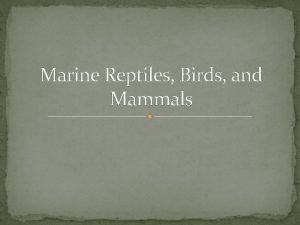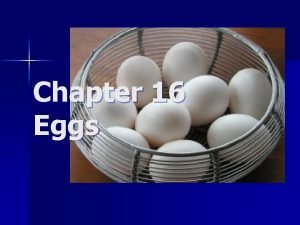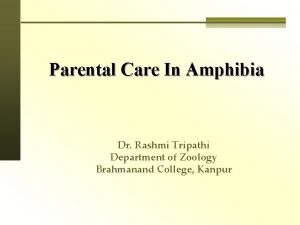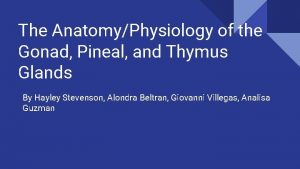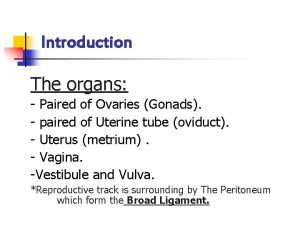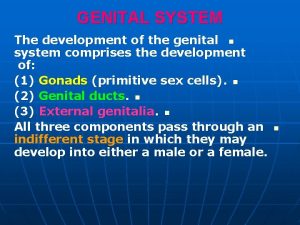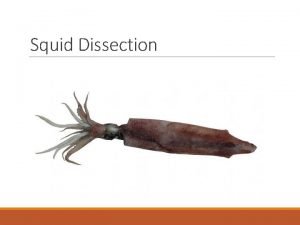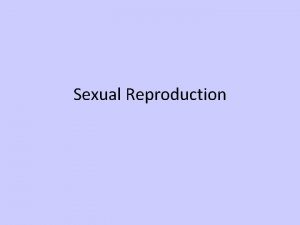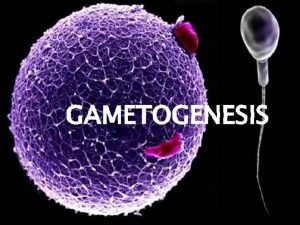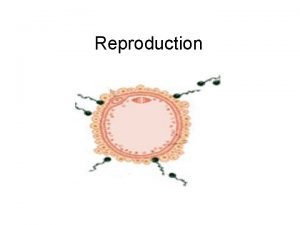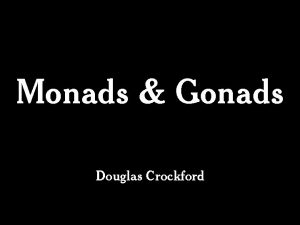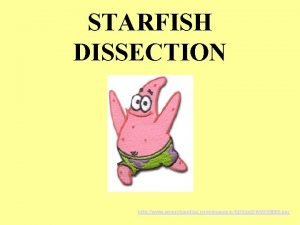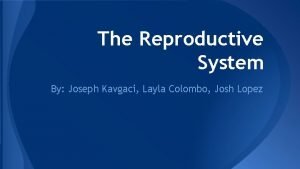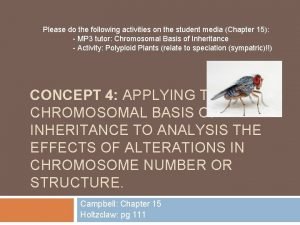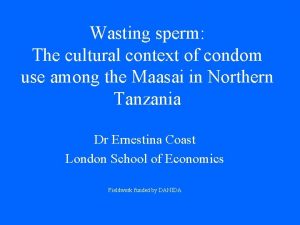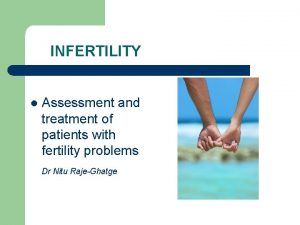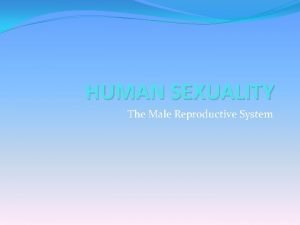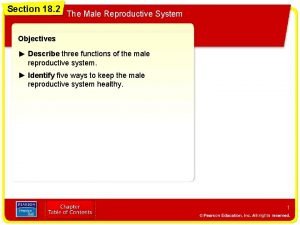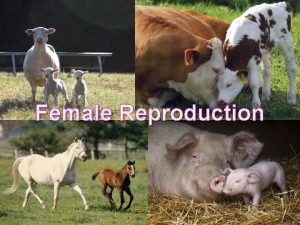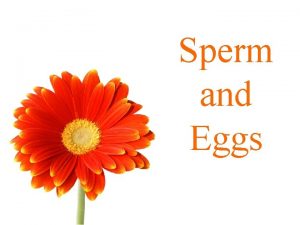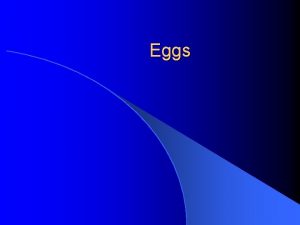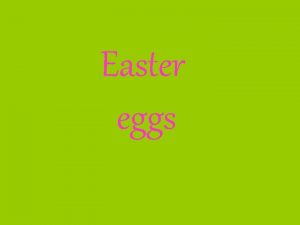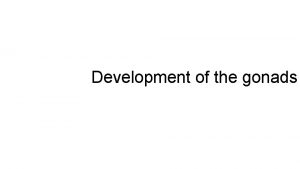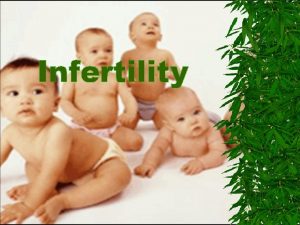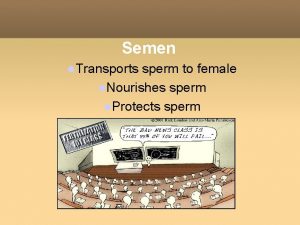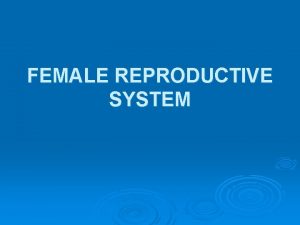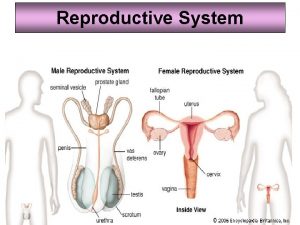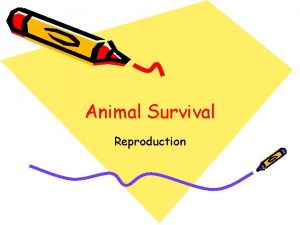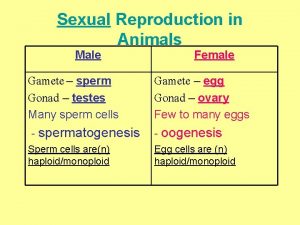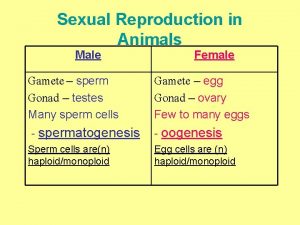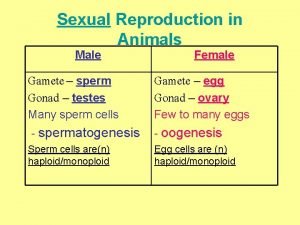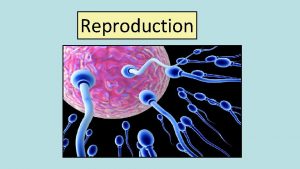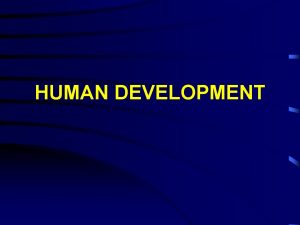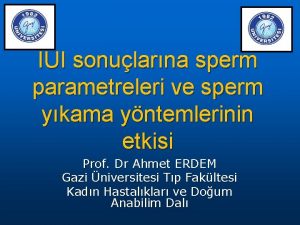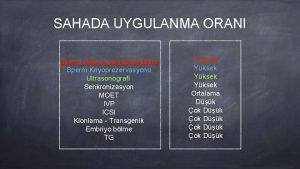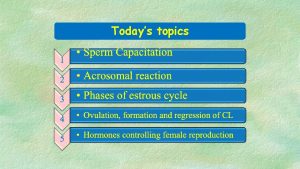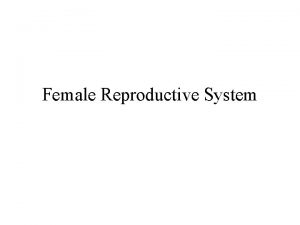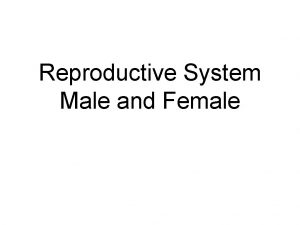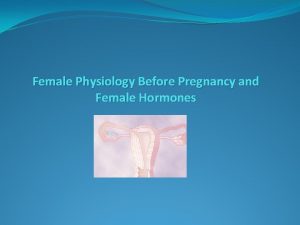Reproduction Eggs Sperm are made in Gonads Female

























- Slides: 25

Reproduction

Eggs & Sperm are made in Gonads Female Gonad - Ovaries Male Gonad - Testes Sperm and Eggs are haploidthat means they have half the Number of chromosomes (add that)

Step 1: When an egg is fertilized by a sperm, it is called a zygote. SPERM EGG n + n= half of the amount of genetic material n = 2 n ZYGOTE

Step 2: Zygote Divides • Zygote divides by mitosis • The repeated mitotic cell division is called Cleavage. • Zygote divides into 2, 4, & then 8 Cells


Step 3: • The zygote keeps dividing & makes a ball of cells, called a Morula

Step 4: • From a Morula it becomes a Blastula • When it becomes hollow it is called a Blastula • **This is what a stem cell is***


Step 5: Gastrulation • Differentiation of tissues occurs • 3 Germ layers are made • Invagination- the cells fold into each other • This is called a gastrula


3 Layers have names: Ectoderm Mesoderm Endoderm

3 Germ Layers (outside layer) Becomes the Nervous System, skin, hair and nails Endoderm (inside layer) digestive tract and respiratory tract Ectoderm Muscles, circulatory system, Mesoderm skeletal system, excretory (middle Layer) system, and glands

• An embryo develops in the uterus, and gets nourishment from a placenta • The exchange of nutrients, respiratory gases, and waste diffuse through the placenta

Placenta

Prenatal Care/Pregnancy • Environmental factors can harm the embryo/fetus • EX: use of drugs, alcohol, tobacco, or other toxins

• Life in the Womb Part 1

STOP

Menstrual Cycle • The release of a mature egg from a follicle • Occurs ~28 days, and lasts for ~7 days • Starts with Puberty, and ends with menopause

4 stages of Menstrual Cycle • 1. Menstruation (flow phase) • 2. Follicle Stage • 3. Ovulation • 4. Corpus Luteum (Luteal Phase)

1. Menstruation • When: Day 1 - Day 6 • Hormone: Increase in Follicle Stimulating Hormone • Menstrual flow begins • Shedding of uterine lining and blood

2. Follicle Stage • When: Day 7 - 14 • Hormone: Follicle Stimulating Hormone stimulates an egg to become mature • Follicle Stimulating Hormone thickens the uterine lining

3. Ovulation • When: Day 14 • Hormone: Estrogen stops the production of FSH • Estrogen stimulates the release of Luteinizing hormone • Mature egg is RELEASED

4. Corpus Luteum Stage • “Luteal Phase” • When: Day 15 - Day 28 • Hormones: Luteinizing and Progesterone • Luteinizing hormone (LH) stimulates the Corpus Luteum to develop

• Corpus Luteum is the part of the follicle that remains in the ovary • It stimulates estrogen and progesterone • It disintegrates and leaves a scar on the ovary

Hormones Progesterone Thickens Uterine Lining Luteinizing Stimulates the corpus luteum to develop Follicle Stimulating Hormone Stimulates an egg to become mature Estrogen Stimulates the release of Luteinizing hormone
 Antigentest åre
Antigentest åre Killer whale eating sea lion
Killer whale eating sea lion Selection and storage of eggs
Selection and storage of eggs Ichthyophis female carefully guards eggs by
Ichthyophis female carefully guards eggs by Binary fission in bacteria
Binary fission in bacteria Hare lynx
Hare lynx Venn diagram of asexual and sexual
Venn diagram of asexual and sexual What is gonad
What is gonad Pak pandani
Pak pandani Steroids endocrine system
Steroids endocrine system Gonads glands
Gonads glands Innervation of ovary
Innervation of ovary Gonads
Gonads Gonads in squid
Gonads in squid Gonads
Gonads Gonads
Gonads Testis and spermatogenesis
Testis and spermatogenesis Monads and gonads
Monads and gonads Ambulacral ridge starfish
Ambulacral ridge starfish Sperm fructose
Sperm fructose A spermatocyte produces the following four sperm cells
A spermatocyte produces the following four sperm cells Wasting sperm
Wasting sperm Sperm analysis chart
Sperm analysis chart Parts of sperm cell
Parts of sperm cell Pathway of semen
Pathway of semen Sperm whale range map
Sperm whale range map

